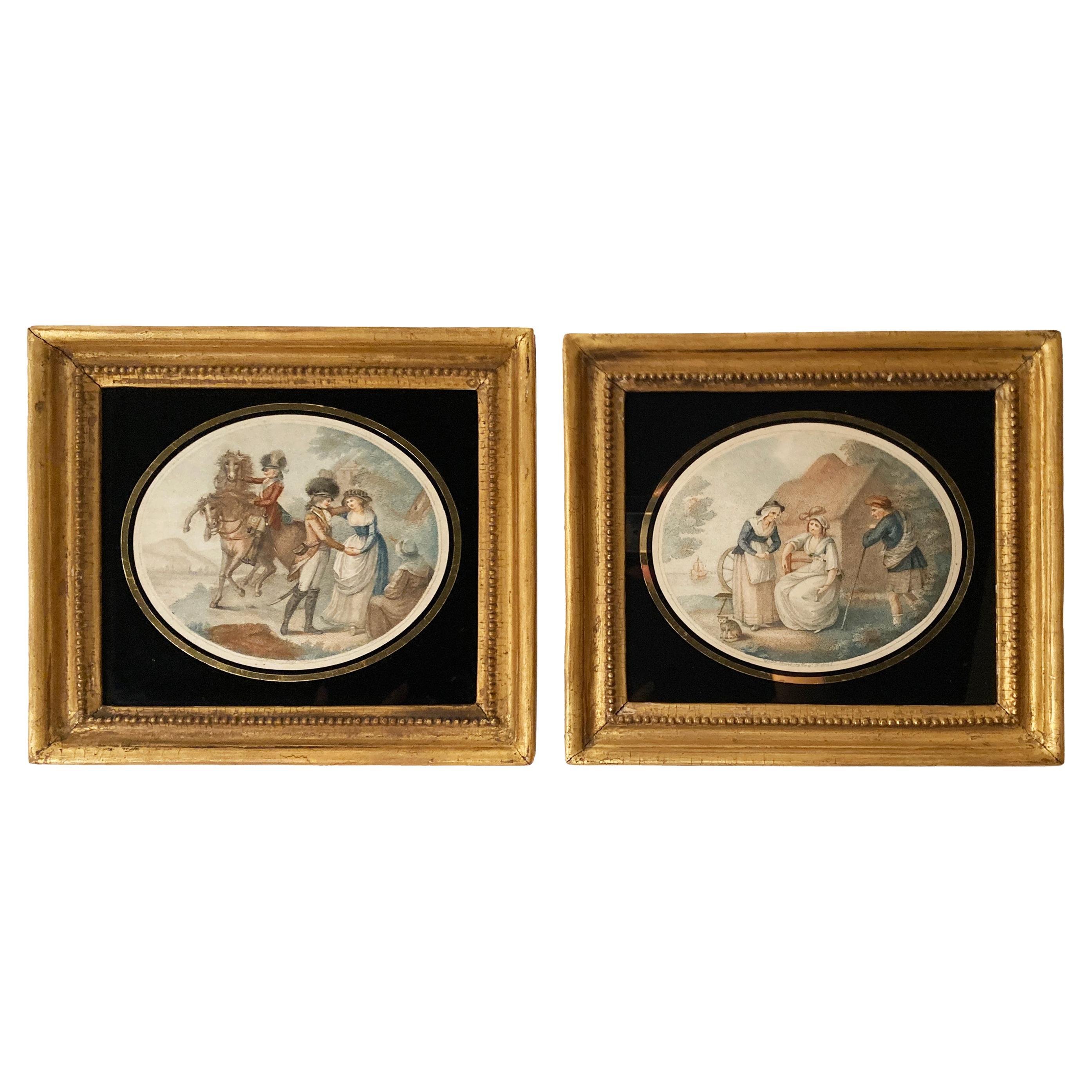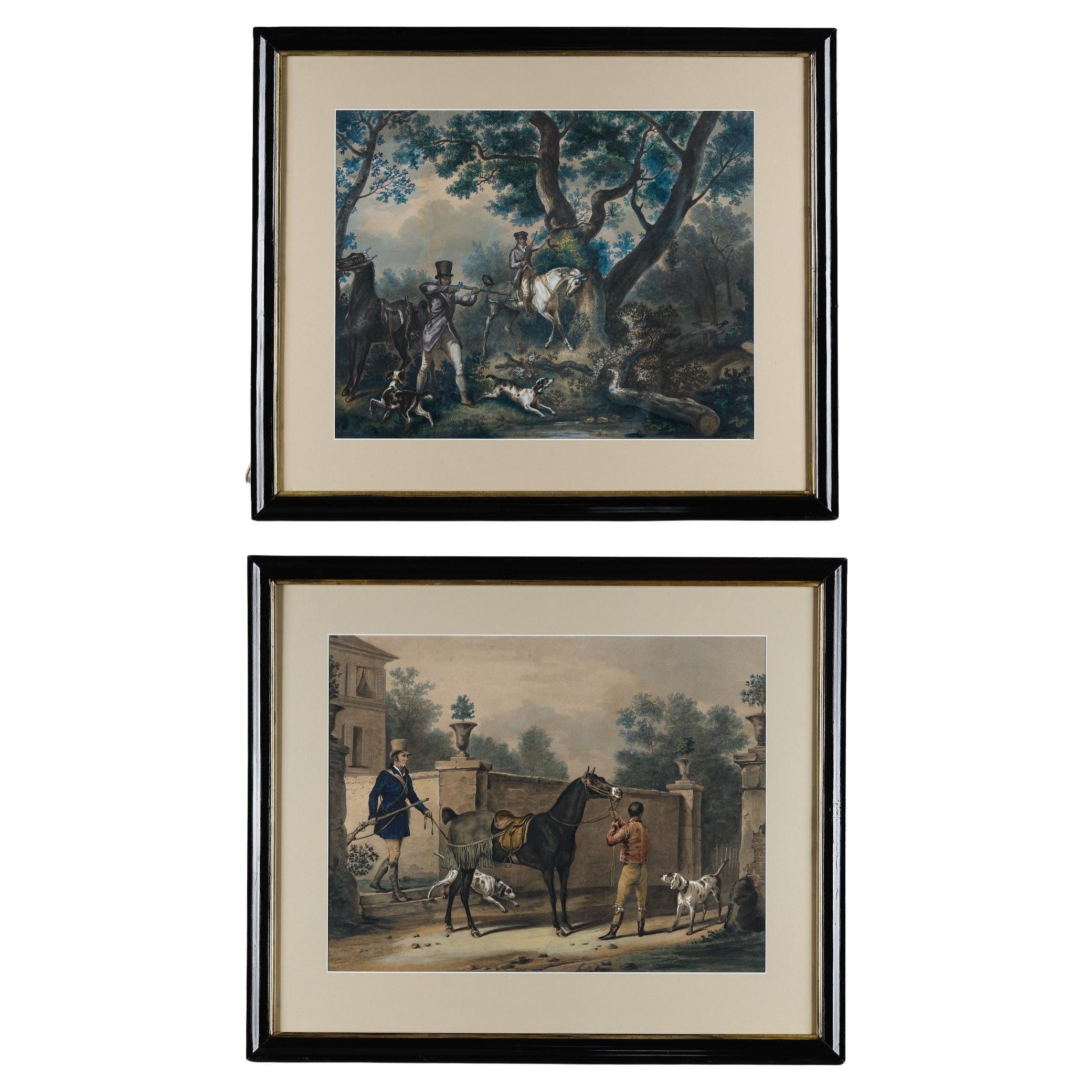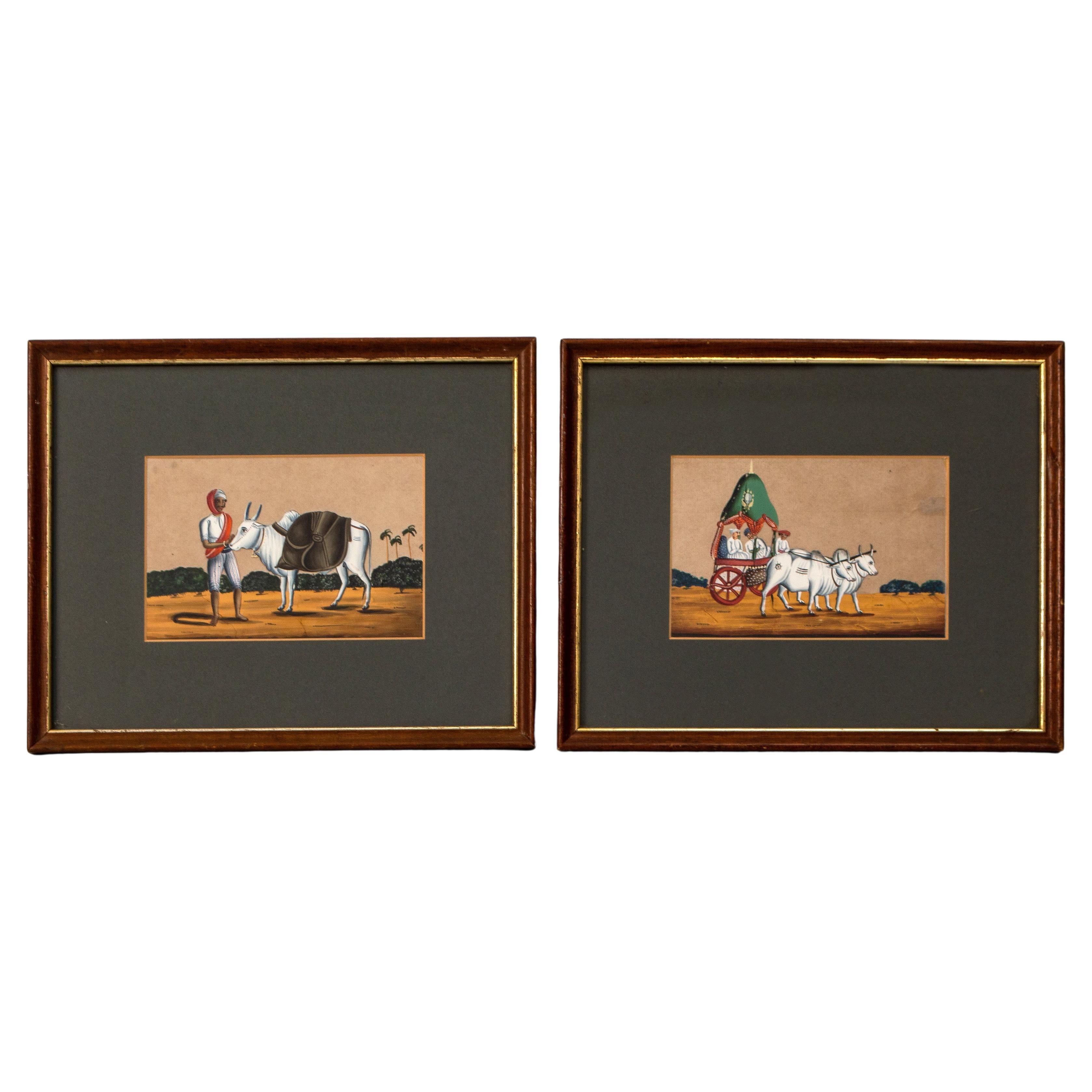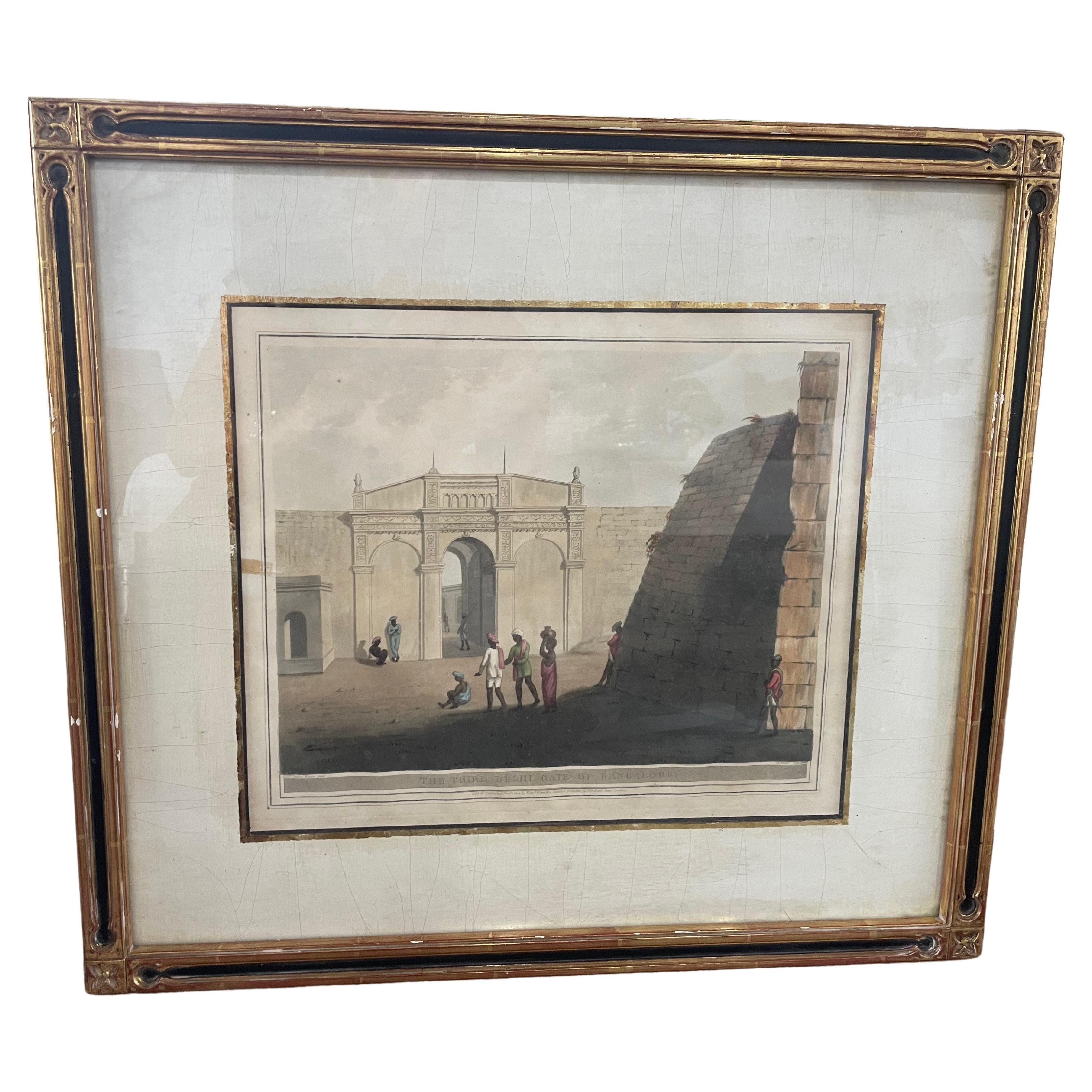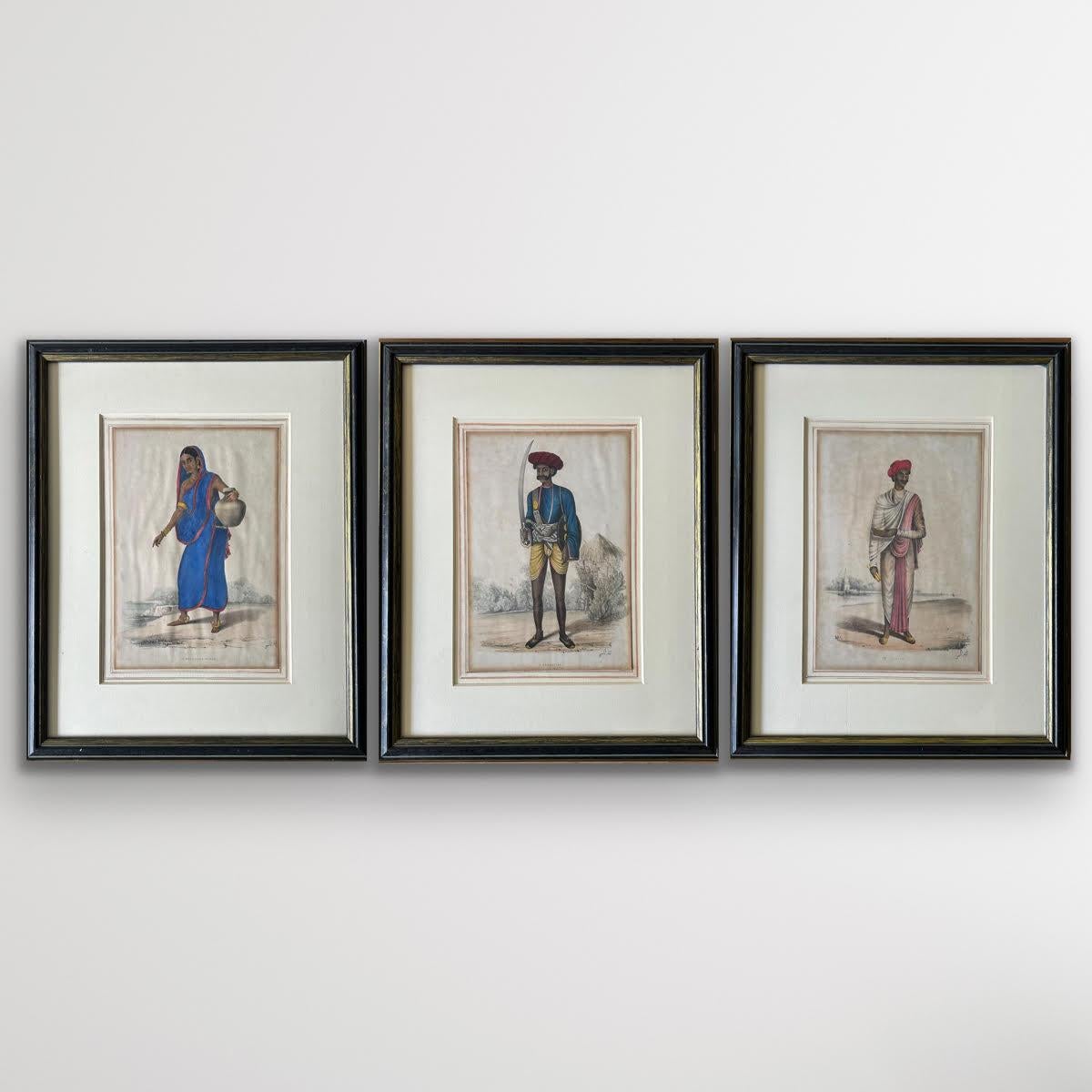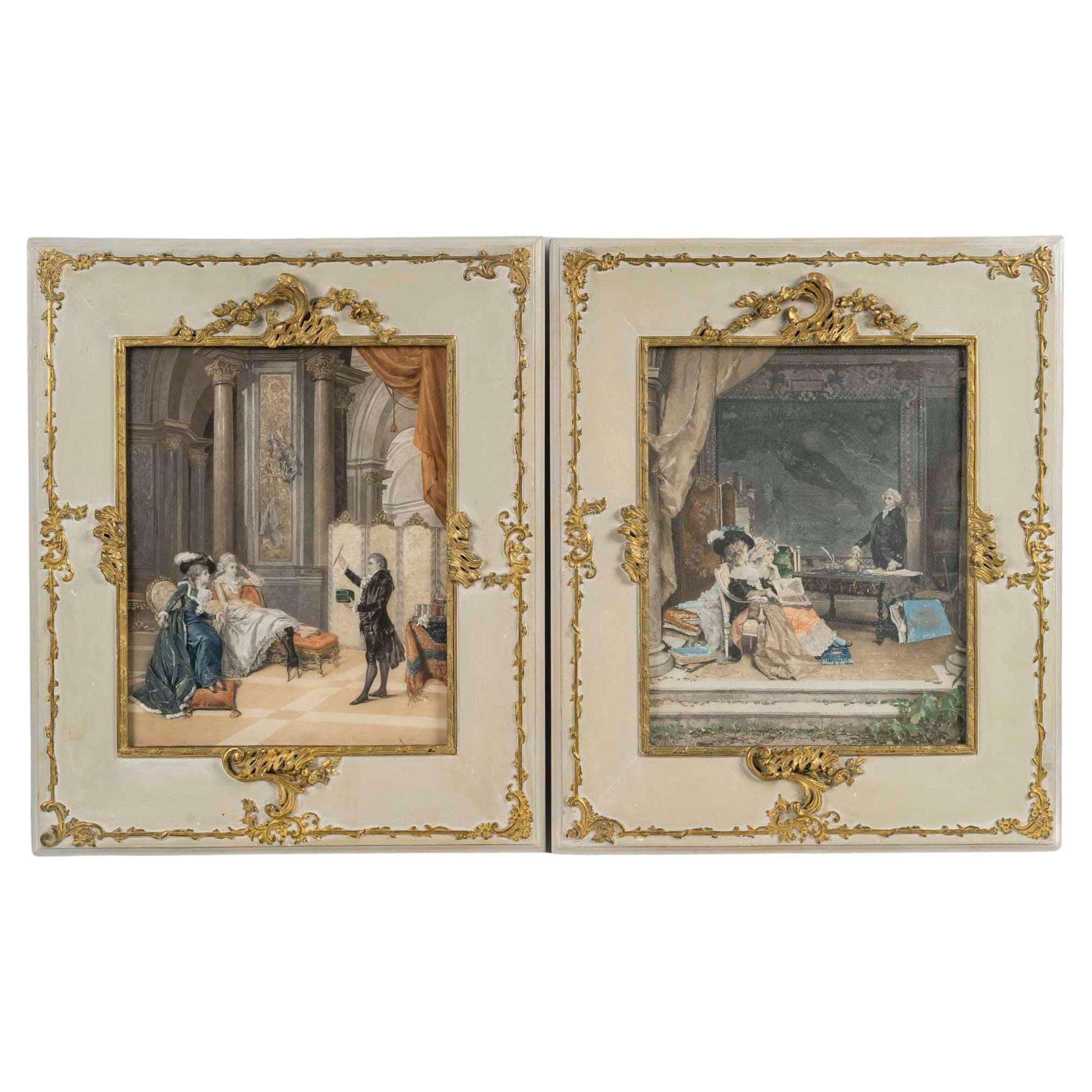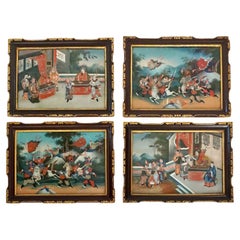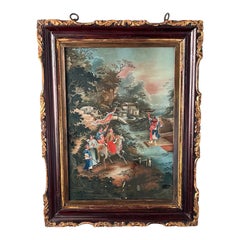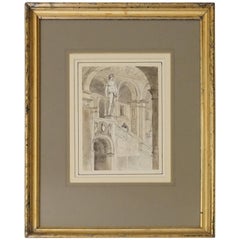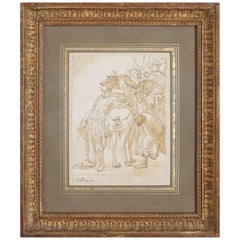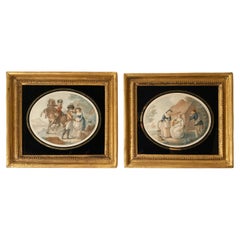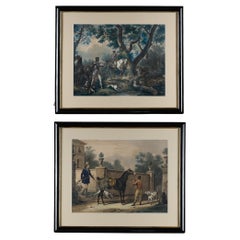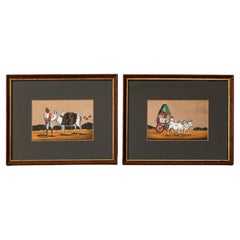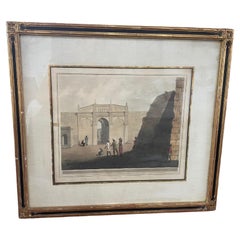Articles similaires à Anglo-Indian Company School Suttee Watercolour Paintings, C. 1810
Vous voulez plus d'images ou de vidéos ?
Demander au vendeur plus d'images ou de vidéos
1 sur 16
Anglo-Indian Company School Suttee Watercolour Paintings, C. 1810
10 861,06 €par ensemble
Expédition
Recherche du devis...La promesse 1stDibs :
Garantie d'authenticité,
Garantie de remboursement,
Annulation sous 24 heures
À propos de cet article
A wonderful and singular set of two early 19th century Anglo-Indian Company School watercolour paintings, likely Murshidabad, depicting 'Sati' or 'Suttee', the historical practice in which a widow sacrifices herself by sitting atop her deceased husband's funeral pyre, and the procession to the pyre. The reverses labeled "From an album of watercolours and drawings belonging to Eliza Frederica Salmon and possibly her sister Mary Salmon, daughter of William Orton Salmon who served in India circa 1800-1824." Works measure 9" x 7" and are presented French matted in giltwood molded frames with beaded inner borders.
'Company School' is a style of miniature painting that developed in India in the second half of the 18th century in response to the tastes of the British serving with the East India Company. The style first emerged in Murshidabad, West Bengal, and then spread to other centres of British trade: Benares (Varanasi), Delhi, Lucknow, and Patna. The paintings were executed in watercolours on paper, ivory, and mica. Favourite subjects were scenes of Indian daily life, local rulers, and sets of festivals and ceremonies, in line with the “cult of the picturesque” then current in British artistic circles.
The 'Company School' artistic movement left an indelible mark on the Indian art scene, influencing subsequent generations of artists and shaping the way one perceives and appreciate art in India. The artists combined European techniques such as perspective and shading with traditional Indian styles, resulting in a distinctive fusion of artistic traditions. One of the key legacies of the Company Style is its documentation of Indian history, culture, and society during a significant period of colonial rule. The paintings provide a visual narrative of the people, landscapes, and customs of the time, offering valuable insights into the diverse fabric of Indian life. They capture the essence of a bygone era, preserving a visual record that helps one understand and appreciate the cultural heritage brought in with the emergence of Company rule in India. Furthermore, the Company Style played a crucial role in bridging the gap between Indian and European artistic traditions. By blending elements from both cultures, the paintings fostered cross-cultural dialogue and exchange. They introduced Indian aesthetics to European audiences and influenced the development of Orientalist art in the West. Similarly, the Company Style also introduced European techniques and perspectives to Indian artists, inspiring them to experiment and evolve their own artistic practices. The legacy of the Company Style of Paintings can be seen in contemporary Indian art, where the fusion of diverse influences continues to thrive. Many artists today draw inspiration from the Company painters, combining traditional techniques with modern approaches to create unique and engaging works of art. This enduring legacy ensures that the Company Style remains an important part of India's artistic heritage, reminding one today of the transformative power of cultural exchange and the beauty that emerges when different artistic traditions converge. The arrival of photography was a direct blow for the style, but it survived into the 20th century, Ishwari Prasad of Patna, who died in 1950, being perhaps the last notable exponent. In the late 19th century the British established several Schools of Art, where a yet more Westernised version of the style was taught, later in competition with other styles.
- Dimensions:Hauteur : 41,28 cm (16,25 po)Largeur : 45,72 cm (18 po)Profondeur : 2,88 cm (1,13 po)
- Vendu en tant que:Lot de 2
- Style:Anglo-indien (De la période)
- Matériaux et techniques:
- Lieu d'origine:
- Période:
- Date de fabrication:circa 1810
- État:Usure conforme à l'âge et à l'utilisation.
- Adresse du vendeur:Kinderhook, NY
- Numéro de référence:1stDibs : LU1002137156252
À propos du vendeur
5,0
Vendeur professionnel agréé
Chaque vendeur répond à des normes strictes en matière d'authenticité et de fiabilité
Établi en 2012
Vendeur 1stDibs depuis 2013
151 ventes sur 1stDibs
Temps de réponse habituel : <1 heure
- ExpéditionRecherche du devis...Expédition depuis : Kinderhook, NY
- Politique des retours
Certaines parties de cette page ont été traduites automatiquement. 1stDibs ne garantit pas l'exactitude des traductions. L'anglais est la langue par défaut de ce site web.
Garantie d'authenticité
Bien qu'il soit peu probable que la situation se présente, dans le cas où vous rencontreriez un problème d'authenticité d'un article, contactez-nous dans un délai d'un an pour obtenir un remboursement intégral. DétailsGarantie de remboursement
Si votre article n'est pas conforme à la description, est endommagé pendant le transport ou ne vous est pas livré, contactez-nous sous 7 jours pour obtenir un remboursement intégral. DétailsAnnulation sous 24 heures
Vous disposez d'un délai de 24 heures pour annuler votre achat sans motif.Des vendeurs professionnels agréés
Nos vendeurs de renommée mondiale doivent respecter des normes strictes en matière de service et de qualité, afin de préserver l'intégrité de nos fiches produit.Garantie d'alignement des prix
Si vous constatez qu'un autre vendeur a mis en vente le même article à un prix inférieur sur un autre site, nous nous alignerons sur ce prix.Livraison en toute confiance à l'international
Notre réseau de transporteurs de premier ordre propose des options d'expédition spécialisées dans le monde entier, y compris des livraisons personnalisées.Plus d'articles de ce vendeur
Tout afficherEnsemble de quatre peintures en verre inversé d'exportation chinoise, datant d'environ 1825
Ensemble de quatre peintures sur verre inversé polychromes d'exportation chinoise datant d'environ 1825, comprenant des vues figuratives de la cour et des scènes de bataille dans des...
Catégorie
Antiquités, Début du XIXe siècle, Chinois, Exportation chinoise, Peintures
Matériaux
Verre, Bois, Bois doré, Laque, Peinture
Peinture en verre inversé d'exportation chinoise représentant des guerriers dans un paysage, vers 1825
Une belle peinture sur verre polychrome d'exportation chinoise vers 1825 représentant un groupe de guerriers avec un cheval et un "Budai" dans un paysage fluvial, dans un cadre origi...
Catégorie
Antiquités, Début du XIXe siècle, Chinois, Exportation chinoise, Peintur...
Matériaux
Verre, Bois, Bois doré, Peinture
Drawing architectural Grand Tour au fusain et à l'aquarelle, vers 1800
Dessin Grand Tour au fusain et à l'aquarelle exécuté par un touriste anglais en Italie, vers 1800, représentant un gentleman regardant par-dessus la balustrade d'un escalier dans un ...
Catégorie
Antiquités, Début du XIXe siècle, Européen, Grand Tour, Dessins
Matériaux
Verre, Bois, Papier
Le Prince, dessin de Jean-Baptiste Le Prince, 1760
Par Jean Baptist Le Prince
Un dessin à l'encre noire et au lavis sépia de l'artiste français Jean-Baptiste Le Prince représentant une scène classique de soldats romains avec du camel signée et datée en bas à g...
Catégorie
Antiquités, Milieu du XVIIIe siècle, Européen, Dessins
Matériaux
Verre, Bois doré, Papier
Paire de tableaux de nature morte en marqueterie "Boulle Work" de style Régence anglaise, vers 1815
Magnifique et rare paire de natures mortes de style Régence anglaise, vers 1815, en " travail de boulle " ou " travail de buhl ". Les cadres de forme rectangulaire, laqués noir et do...
Catégorie
Antiquités, Début du XIXe siècle, Anglais, Regency, Art décoratif
Matériaux
Plaqué argent, Laiton, Cuivre, Étain
Peinture à l'huile anglaise de cheval et de palefrenier attribuée à Ben Marshall, datant d'environ 1805
Une étonnante peinture équestre anglaise à l'huile sur toile datant de 1805, fermement attribuée à Benjamin Marshall, éminent artiste de la fin de...
Catégorie
Antiquités, Début du XIXe siècle, Anglais, Regency, Peintures
Matériaux
Bois doré, Toile
Suggestions
Gravures en couleurs de la fin du 18e siècle d'après des originaux de l'artiste Henry William
Par Henry William Bunbury
Il s'agit de gravures en couleur exceptionnellement RARE, réalisées d'après des originaux de l'artiste Henry William Bunbury (1750-1811) et gravées par Francesco Bartolozzi. Les deux...
Catégorie
Antiquités, Fin du XVIIIe siècle, Anglais, Georgien, Estampes
Matériaux
Verre, Bois doré, Papier
Gravures en deux couleurs rehaussées de gouache, signées Carle Vernet
Par Carle Vernet (Antoine Charles Horace Vernet)
La première gravure représente une scène de chasse du XIXe siècle, avec un groupe d'hommes élégamment vêtus, accompagnés de chiens et de chevaux, se déplaçant dans un paysage foresti...
Catégorie
Antiquités, années 1830, Français, Charles X, Dessins
Matériaux
Papier
3 240 € / ensemble
Paire d'anciennes peintures indiennes miniatures au mica du 19e siècle C.1830
Paire d'anciennes peintures indiennes miniatures au mica du 19e siècle C.1830
École de la compagnie indienne
Paire de peintures indiennes à la gouache sur mica du 19e siècle.
Représ...
Catégorie
Antiquités, XIXe siècle, Indien, Peintures
Matériaux
Papier
Impressions d'art du lieutenant James Hunter - Inde (série de 4)
Ces estampes du milieu du XVIIIe siècle, peintes à l'origine par l'officier militaire et artiste britannique Lt. James Hunter pendant son service en Inde, représentent des images de ...
Catégorie
Antiquités, Fin du XVIIIe siècle, Britannique, Anglo-indien, Estampes
Matériaux
Papier
Inde, début du 19e siècle Lithographies coloriées à la main Rare Fanny Parks
Trois lithographies coloriées à la main de :
Fanny Parks (1794-1875)
Les pérégrinations d'un pèlerin, à la recherche du pittoresque, pendant vingt-quatre ans en Orient avec, Révéla...
Catégorie
années 1850, Autres styles artistiques, Estampes - Figuratif
Matériaux
Papier, Lithographie, Pigment
Paire de peintures à l'aquarelle sur papier, joliment encadrées, 19ème siècle.
Paire d'aquarelles sur papier, joliment encadrées, 19e siècle.
Paire d'aquarelles sur papier, signées, 19e siècle, joliment encadrées dans un cadre en bois sculpté et stuc doré, 19e...
Catégorie
Antiquités, XIXe siècle, Français, Napoléon III, Peintures
Matériaux
Papier
